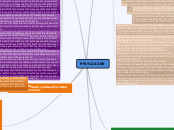PPL 209
Healthy Eating & Fitness
Many technological advances and conveniences that have made our lives easier and less active, many personal variables, including physiological, behavioral, and psychological factors, may affect our plans to become more physically active. Ten barriers to physical activity include: Personal barriers ( lack of self motivation, non-enjoyment of exercise, boredom of exercise , fear of being injured or having been injured recently.) As well as, not having a partner to be physically active with if you are not independent, nobody to motivate you, lack of support from family and peers, lack of confidence, do not have the time or effort to be physically active.
People's food consumption can be influenced by many different factors such as - biological determinants ( hunger, appetite, taste), Economic determinants ( cost, income, availability), Physical Determinants ( access, education, skills (cooking), and time), Social Determinants ( culture, family, peers, and meal patterns), Psychological Determinants ( mood, stress, guilt), and lastly, attitudes, beliefs, and knowledge about food.
Good Nutrition Can Help: Reduce the risk of some diseases like heart disease, diabetes, some cancers, stroke etc.. Reduce high blood pressure, lower higher cholesterol, improve you well being, improve your ability to fight off illness, improve your ability to recover from illness or injury.
Questionable Nutrition Trends Include: Coconut oil which is said to protect heart disease, juicing " helps lose weight", and chocolate helps with heart.
CANADA'S FOOD GUIDE RECOMMENDATIONS:
- Vegetables + Fruit ( Children consumption = 4 servings per day.) ( Adults = 7-8 servings per day)
- Grains ( Children consumption = 3 servings per day) ( Adult = 6-7 servings per day)
- Milk & Alternatives ( Children servings = 2 servings per day)(Adult = 2 servings per day.)
- Meat & Alternatives ( Children servings = 1 serving per day)(Adult = 2 servings per day.)
In short term lack of proper nutrition can result in, stress, tiredness, and our capacity to work. It can contribute to developing some illness and other health problems such as: Obesity, tooth decay, high blood pressure.
Substance use, addictions and related behaviors
DEFINITIONS:
DRUG- a medicine or other substance which has a physiological effect when ingested or otherwise introduced to the body.
DRUG USE- substance use is the continued use of alcohol, illegal drugs, or the misuse of prescription drugs (over the counter). These consequences may result in: Problems associated with work, school, home, or in interpersonal relationships.
DRUG ABUSE- the habit of taking an addictive, illegal, or prescribed drug. (usually illegal).
Physical effects of drugs on your health:
- Hair loss
- Your appearance may come off as not clean. Poor hygiene.
- You may act differently ( become loud and obnoxious)
- Hollow cheeks, holes and dips in face.
Cognitive impact of drug use:
- May interfere with hormonal processing
- The brain, yourself, becomes addictive. Usually as time goes by and you haven't had your high for the day you get sick. Once you get the drug of your choice again it is called " a fix".
- Interferes with nerve cells.
- Pleasures your brain, brain cells.
08
Financial impact of drug use:
- Huge portion of income, or others income, goes towards your drug of choice which is not cheap and can leave you in tons of debt or owing your dealer money which is not a safe nor comfortable situation to end up in.
- Cheapest drug could be the worst because it could be a bad batch the supplier is trying to get rid of.
- All your money is going towards this product, which can sometimes make you forget about the other things you money needs to or should go to. IE, rent, groceries, toiletries, children, etc..
Social Impact of Drug use:
- Can get yourself into doing time or breaking the law by stealing and selling things to get high.
- Separate yourself from family for the substance.
- Could end up completely loosing your friends and family.
- Could end up jobless.
Physical Activity and Fitness
Human Development & Sexual Health
Factors that influence sexual decision making:
~ Communication or limits
~ Being aware and respecting the limits of others who are either comfortable in sexual activity or not.
~ Peer and family expectations
~ Medias message on the touchy topic
~ Myths & Facts
~ Substance usage
Learning about STI's:
- Also known as sexually transmitted disease(s).
- Can be transmitted through anal, oral, and genital sex.
- May also be transmitted through skin to skin contact or through blood.
- STI's may prevent a women from having a baby.
Myths and misconceptions relating to sexuality:
~ Not all STI's are curable
~ STI's can be passed through oral sex
~ You CAN get pregnant even if you have not gotten your menstrual cycle..
ADVANTAGES & DISADVANTAGES OF DATING IN DIGITAL ERA:
Advantage - you can stay connected, able to take new/different risk, can get in touch easier with a peer or partner.
Disadvantage- presented differently online, jealousy, easy to find yours/someone's location, as well as peer pressure and cyberbullying.
Personal Safety and Injury Pervention
Identify Risky Teenage Behavior:
~ Tattoos
~ Alcohol consumption
~ Substance abuse
~ Smoking
~ School absence
Factors that affect your mental health:
- A balance in life
- Engage in productive daily activities
- Extra curricular activities
- Maintain relationships
- Adapt and cope with stress
emers
Stress:
- Lower ranked people have higher stress levels.
- Stressed rat brain sells dramatically got smaller then non-stressed rats.
